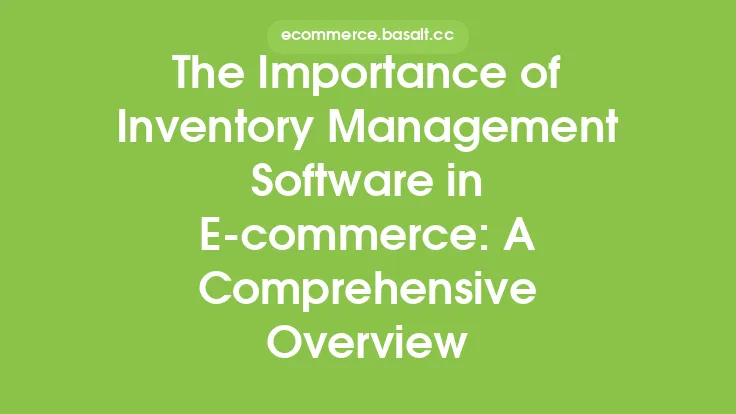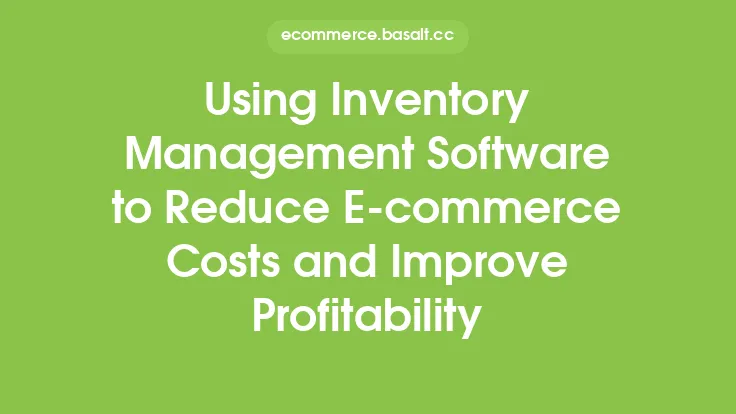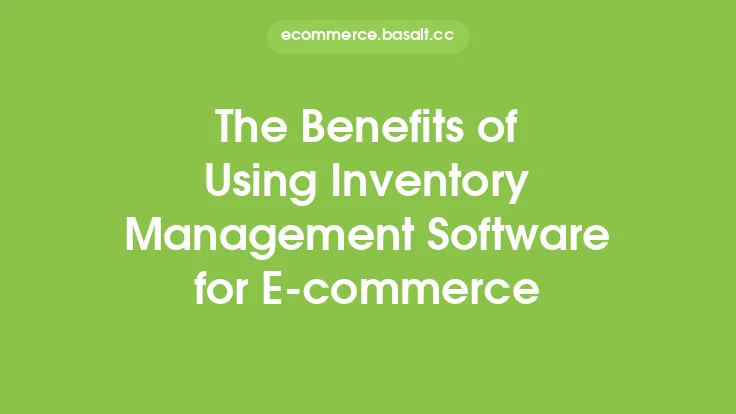Effective inventory management is crucial for e-commerce businesses as it directly impacts their bottom line. By optimizing inventory levels, e-commerce companies can reduce costs, improve efficiency, and enhance customer satisfaction. In this article, we will delve into the role of inventory management in reducing e-commerce costs and improving efficiency, exploring the key strategies and best practices that businesses can adopt to achieve these goals.
Introduction to Inventory Management
Inventory management refers to the process of planning, organizing, and controlling the flow of goods from raw materials to finished products. It involves managing the inventory levels, tracking stock movements, and optimizing storage and shipping processes. In e-commerce, inventory management is critical as it affects the ability of businesses to fulfill customer orders promptly and efficiently. Poor inventory management can lead to stockouts, overstocking, and delayed shipments, resulting in lost sales, damaged reputation, and increased costs.
The Cost of Inefficient Inventory Management
Inefficient inventory management can have significant costs for e-commerce businesses. Some of the most common costs associated with poor inventory management include:
- Holding costs: The cost of storing and maintaining inventory, including warehouse rent, utilities, and equipment.
- Stockout costs: The cost of losing sales due to stockouts, including lost revenue and damaged customer relationships.
- Overstocking costs: The cost of carrying excess inventory, including storage costs, obsolescence, and waste.
- Shipping costs: The cost of shipping and handling inventory, including transportation, packaging, and labor costs.
- Return costs: The cost of processing returns, including restocking, refunding, and reshipping.
Strategies for Reducing Inventory Costs
To reduce inventory costs, e-commerce businesses can adopt several strategies, including:
- Just-in-time (JIT) inventory management: This involves ordering and receiving inventory just in time to meet customer demand, reducing holding costs and minimizing stockouts.
- Drop shipping: This involves shipping products directly from the supplier to the customer, eliminating the need for inventory storage and handling.
- Inventory optimization: This involves analyzing sales data and inventory levels to determine the optimal inventory levels and reduce stockouts and overstocking.
- Supply chain optimization: This involves streamlining the supply chain to reduce lead times, improve delivery schedules, and minimize shipping costs.
Improving Efficiency through Inventory Management
In addition to reducing costs, effective inventory management can also improve efficiency in e-commerce businesses. Some of the ways to improve efficiency include:
- Automating inventory management: Using inventory management software to automate tasks such as tracking inventory levels, processing orders, and updating stock levels.
- Implementing a first-in, first-out (FIFO) inventory system: This involves selling or using the oldest inventory first to reduce waste and obsolescence.
- Using barcode scanning and RFID technology: This involves using barcode scanning and RFID technology to track inventory movements and update stock levels in real-time.
- Implementing a vendor-managed inventory (VMI) system: This involves partnering with suppliers to manage inventory levels and reduce stockouts and overstocking.
Best Practices for Inventory Management
To achieve effective inventory management, e-commerce businesses should adopt the following best practices:
- Monitor inventory levels regularly: This involves tracking inventory levels daily or weekly to identify trends and patterns.
- Analyze sales data: This involves analyzing sales data to determine the optimal inventory levels and reduce stockouts and overstocking.
- Implement a inventory classification system: This involves categorizing inventory into different classes based on sales velocity, profitability, and seasonality.
- Provide training to staff: This involves providing training to staff on inventory management procedures and best practices.
- Continuously review and improve inventory management processes: This involves regularly reviewing inventory management processes and implementing changes to improve efficiency and reduce costs.
Conclusion
Effective inventory management is critical for e-commerce businesses as it directly impacts their bottom line. By adopting strategies such as JIT inventory management, drop shipping, and inventory optimization, businesses can reduce costs and improve efficiency. Additionally, implementing best practices such as monitoring inventory levels, analyzing sales data, and providing training to staff can help businesses achieve effective inventory management. By prioritizing inventory management, e-commerce businesses can improve customer satisfaction, reduce costs, and increase profitability.





